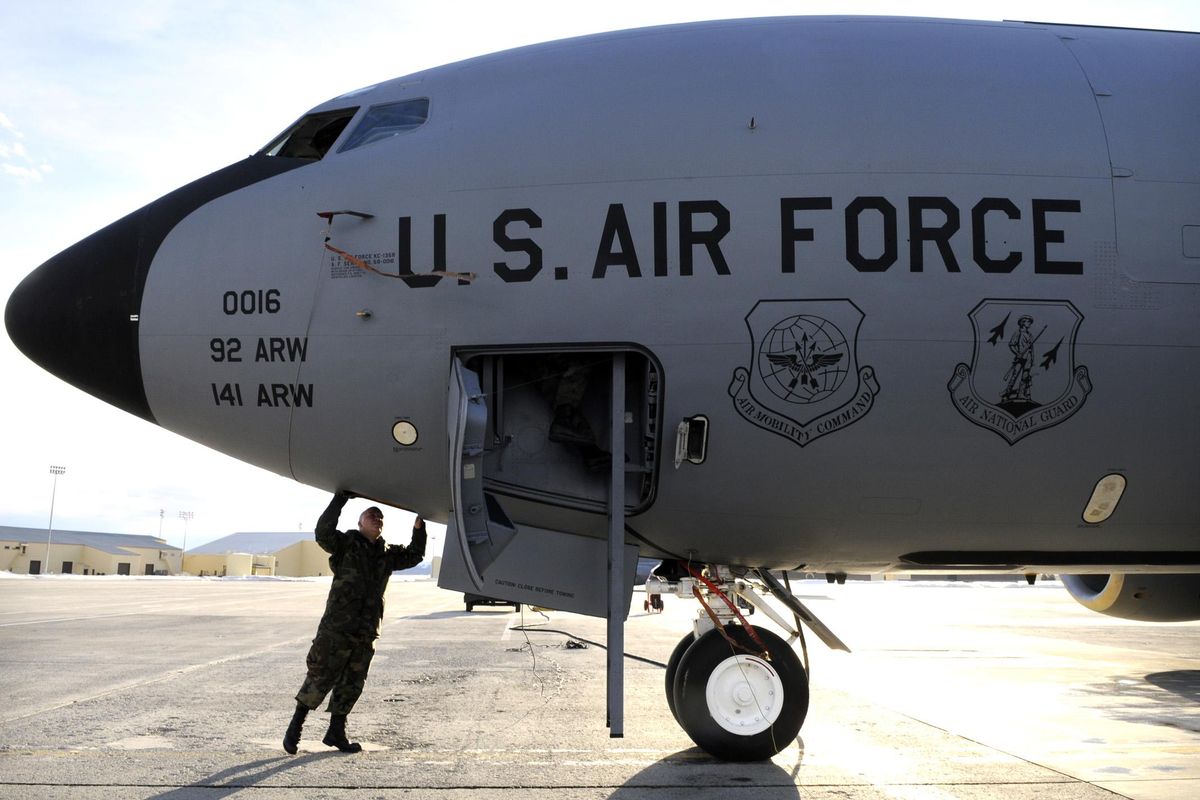Basing decision for next-generation tankers to shift Fairchild’s role

For more than a decade local and state officials lobbied to bring the nation’s newest military tanker to Fairchild Air Force Base to ensure its long-term future.
That didn’t happen; three other bases were chosen instead.
But officials say those decisions arenot a death knell for the county’s largest employer. In fact, the base could get more planes and the people needed to fly them.
The last time Fairchild got the newest planes in the nation’s military inventory, Dwight Eisenhower was the president and Nikita Kruschev was consolidating his control of the Soviet Union. Elvis was about to be drafted, the Dodgers were leaving Brooklyn and the Hula Hoop was about to make the Wham-O toy company a fortune.
The year was 1958, and as the home to the B-52 Stratofortress, Fairchild was assigned a squadron of brand new KC-135 Stratotankers to keep the bombers in the air long enough to reach targets halfway across the world. “Strato-” was a big deal in 1958, signifying that the planes would fly way up in the stratosphere, out of range of Soviet missiles.
That was before the Pentagon discovered that Soviet missiles could indeed reach that far, and revised their tactics to have the planes fly really low, to stay under Soviet radar.
Nearly 60 years later, the B-52s are gone and the KC-135s are the mainstays of the base.
For 15 years, local business leaders and members of the state’s congressional delegation saw replacing those Eisenhower-era tankers as key to keeping the base open into the foreseeable future.
But in 2014 Fairchild finished second to a base in Kansas to be the first home of the KC-46A. And in January the Pentagon said the next two bases for that plane will be in New Jersey and Delaware, barring some unexpected environmental problem that forces the Air Force to shift gears.
Without those next-generation planes, Fairchild could be considered an easy target for some future base closure commission – despite all the new tankers rolling off the Boeing assembly line in Everett that are spoken for until sometime in the mid-2020s.
But no such commission is scheduled, and without the process that surrounds a commission, Congress rarely has the political will to close a base – let alone one that has had hundreds of millions of dollars in improvements in the last several decades.
Fairchild’s KC-135s aren’t really the same planes sent to the base in 1958. They have new engines, new avionics and other upgrades, and they don’t just refuel America’s dwindling numbers of B-52s. Practically every aircraft in the nation’s military inventory, as well as many U.S. allies’ airplanes, now need refueling.
The Air Force’s need to refuel lots of planes, in lots of locations all over the world, may be more important to Fairchild’s continued existence than becoming the home to a new plane.
In announcing the new homes for the KC-46A, the Air Force said it also needs someplace to send the KC-135s they are replacing. Although they are old, the Air Force believes with proper maintenance, some of the older tankers can remain in service until 2040 and as many as 25 more KC-135s could be sent to Fairchild.
While not giving up completely on questioning the Air Force’s machinations that led to its latest KC-46A basing decisions,Washington officials like Sen. Patty Murray are touting Fairchild’s advantages for being a new “tanker super base.” It’s the closest major tanker facility to Asia, where the military is expected to direct more attention, and in a key location to assist Air Force and Navy operations throughout the West Coast.
Fairchild also has the capacity for the extra planes, because in the mid 1990s, after the B-52s left, the base was the nation’s largest tanker base with more than 60 KC-135s.
State officials are also looking for other assignments for the base, including the prospect of sending Navy fighters to Fairchild if the Puget Sound is assigned another aircraft carrier. Because the Puget Sound’s airspace is crowded with commercial jets at SeaTac Airport and Boeing Field, and Air Force cargo jets at Joint Base Lewis-McChord, the Navy currently keeps fighters at California bases when the carriers are in their home ports, so keeping some at Fairchild would actually be closer to their ships.
While that would be a new role for the base, Fairchild has taken on many new assignments since it was first built as a repair station for B-17s in World War II. It evolved into the home to active duty bombers, then added active duty tankers and later a wing of National Guard tankers. Then the bombers left. Along the way it gained and lost air-defense missiles and was considered as a home for a new intercontinental ballistic missile that was never built.